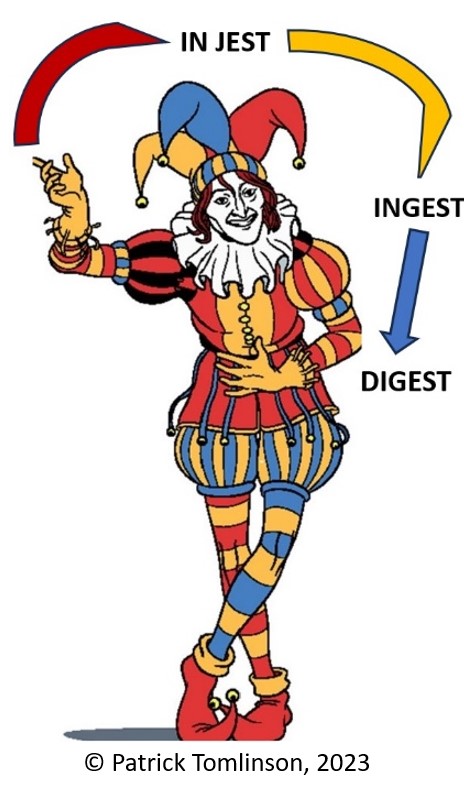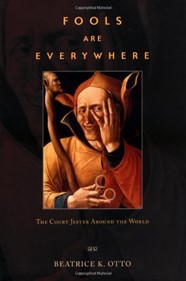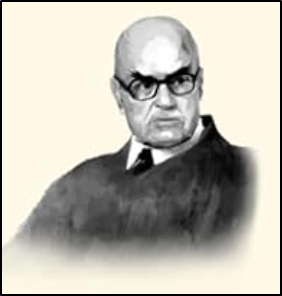IN JEST – MAKING THE UNTHINKABLE DIGESTIBLE (PATRICK TOMLINSON, 2023)
Date added: 08/12/23

The Jester has a long history spanning centuries. The role of the Jester has appeared in many cultures and has a universal quality. One of the challenges in difficult situations in life and work is how to move forward when the situation seems difficult and even dire. I am reminded of a time in a senior team meeting when all the organization’s problems were being named. The mood of despondency became heavy and silent. Then one of the people in the meeting broke the silence and said, ‘There’s nothing so bad that it can’t get worse’. I am not sure what was meant but it made us laugh and lightened the mood. We were then able to think better about our challenges.
 The jester has had the role of being able to speak truths or put forward suggestions in jest. There may be a playful mischievous quality of speaking with tongue in cheek. Sometimes the Jester would be more influential and useful to the person in charge, than those with high rank. Feedback from the ‘fool’ or jester may feel less threatening to one’s position.
The jester has had the role of being able to speak truths or put forward suggestions in jest. There may be a playful mischievous quality of speaking with tongue in cheek. Sometimes the Jester would be more influential and useful to the person in charge, than those with high rank. Feedback from the ‘fool’ or jester may feel less threatening to one’s position.
Beatrice K. Otto's (2001) classic book, gives an illuminating overview of the role of the Jester through history. The subject has got me thinking about seriousness and lightness. The work I am involved with in the field of childhood trauma and recovery, as with many other fields of work is serious. A lot can hinge on the outcomes at a deeply human level.
However, as the leadership consultant, family therapist, and Rabbi, Edwin. H. Friedman (1999) argued, that when things become deadly serious it can be more of a reflection on the state of the system than the issues at hand. Friedman claimed that deadly seriousness in a system, whether that be a family, organization, or society, is often a symptom of the system being gridlocked by chronic anxiety. This kind of seriousness is not creative or likely to help things move forward. He argues (1999),
A major criterion for judging the anxiety level of any society is the loss of its capacity to be playful.
Broadening the perspective, the relationship between anxiety and seriousness is so predictable that the absence of playfulness in any institution is almost always a clue to the degree of its emotional regression.
Playfulness can get you out of a rut more successfully than seriousness.
Being playful in the face of difficult problems is not easy. It is a delicate psychological task. It might seem counterintuitive, even though we know that creativity depends upon playfulness. One runs the risk of seeming insensitive or not taking matters seriously, which can feel like a catch-22 situation. Friedman (1994) refers to,
The seriousness of tragedy and the tragedy of seriousness.
The jester in history would sometimes be disposed of if their jesting was too close to the bone. In talking about leadership consultancy, Manfred Kets De Vries uses the term ‘insultant’. By this, he means that the role of being outside of the system allows observations to be made, truths to be told, and questions asked, which might not be tolerable within the system. Similarly, Anton Obholzer in his book, Workplace Intelligence: Unconscious Forces and How to Manage Them, argues that the role of a consultant enables a degree of licensed stupidity. Simply, asking a question or lightly making an observation, whilst initially being met with defensiveness and disbelief may unlock the system and enable assumptions to be challenged.
 There is a parallel with the concept of emotional containment, described by the psychoanalyst Wilfred Bion (1977), of making the unthinkable thinkable. The phrase ‘In Jest’, as in ‘many a true word spoken in jest’, has the same pronunciation as ingest. The use of humour, jest, and lightness may allow us to ingest, take something in and think about it. With anxiety contained, we are then more able to digest and make sense of what was previously overwhelming, unthinkable, and indigestible. Digesting and making sense of experience allows us to be, to ‘sit with’, to feel, and to use our imagination playfully. The lightness of a non-anxious presence can help facilitate this.
There is a parallel with the concept of emotional containment, described by the psychoanalyst Wilfred Bion (1977), of making the unthinkable thinkable. The phrase ‘In Jest’, as in ‘many a true word spoken in jest’, has the same pronunciation as ingest. The use of humour, jest, and lightness may allow us to ingest, take something in and think about it. With anxiety contained, we are then more able to digest and make sense of what was previously overwhelming, unthinkable, and indigestible. Digesting and making sense of experience allows us to be, to ‘sit with’, to feel, and to use our imagination playfully. The lightness of a non-anxious presence can help facilitate this.
References
Bion, W.R. (1977) Second Thoughts, New York: Jason Aronson
Friedman, E.H. (1994) An Interview with the First Family Counselor, in, The Myth of the Shiksa and Other Essays (2008), Church Publishing: New York
Friedman, E.H. (1999) A Failure of Nerve: Leadership in the Age of the Quick Fix, Church Publishing: New York
Kets de Vries, M.F.R. (2022) A Merchant of Hope – An Interview with Professor Manfred F.R. Kets de Vries, The Inner Edge with Shane Cradock, https://open.spotify.com/episode/7wtQCahqKtAY8FGTzVCG9J
Obholzer, A. (2021) Workplace Intelligence: Unconscious Forces and How to Manage Them, London and New York: Routledge
Otto, B.K. (2001) Fools are Everywhere: The Court Jester Around the World, Chicago: Chicago University Press
Files
Please leave a comment
Next Steps - If you have a question please use the button below. If you would like to find out more
or discuss a particular requirement with Patrick, please book a free exploratory meeting
Ask a question or
Book a free meeting













